Installing a swimming pool is more than just a home improvement project—it’s an investment in your lifestyle, health, and property value. Whether you envision a serene retreat for relaxation, a fun-filled space for family gatherings, or a fitness hub for daily exercise, a well-designed pool can bring your dreams to life. However, the process of pool installation involves careful planning, overcoming challenges, and making informed decisions to ensure a smooth and successful outcome.
In this comprehensive guide, we’ll walk you through every step of the swimming pool installation process, from initial planning to post-installation care. We’ll also explore common challenges, safety considerations, energy-efficient solutions, and ways to enhance your pool with upgrades and accessories.
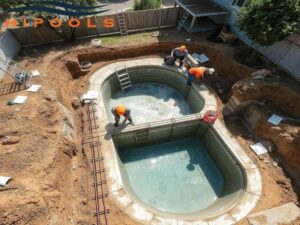
Planning the Installation Process
The key to a successful pool installation lies in meticulous planning. Rushing into the project without a clear plan can lead to costly mistakes and delays. Here’s how to get started:
1. Define Your Goals
– Purpose: Are you building a pool for recreation, exercise, or aesthetic appeal? Your goals will influence the design, size, and features of your pool.
– Usage: Consider how many people will use the pool regularly. A family of five will need a larger pool than a couple.
2. Set a Realistic Budget
– Pool installation costs vary depending on the type of pool, materials, and additional features. On average, in-ground pools cost between $35,000 and $65,000, while above-ground pools range from $1,500 to $15,000.
– Don’t forget to factor in long-term costs like maintenance, repairs, and utilities.
3. Choose the Right Pool Type
| Pool Type | Pros | Cons |
| Concrete | Durable, customizable | Expensive, longer installation time |
| Vinyl | Affordable, smooth surface | Less durable, liner replacement needed |
| Fiberglass | Quick installation, low maintenance | Limited shapes and sizes |
| Above-Ground | Cost-effective, easy to install | Less durable, limited design options |
4. Hire a Reputable Contractor
– Look for a licensed and insured pool installer with positive reviews and a strong portfolio.
– Ask for references and visit completed projects to assess their work quality.
5. Obtain Necessary Permits
- Most local governments require permits for pool installation. Your contractor can often handle this, but it’s your responsibility to ensure compliance with local regulations.
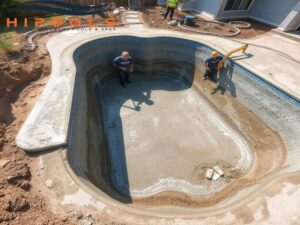
Common Installation Challenges and Solutions
Even with careful planning, pool installation can present challenges. Here’s how to address some of the most common issues:
| Challenge | Solution |
| Unstable Soil | Conduct a soil test before excavation. Use reinforced materials if needed. |
| Utility Lines | Locate and mark utility lines to avoid damage during digging. |
| Weather Delays | Schedule installation during favorable weather conditions. |
| Budget Overruns | Set aside a 10-15% contingency fund for unexpected expenses. |
| Permit Delays | Start the permit application process early to avoid delays. |
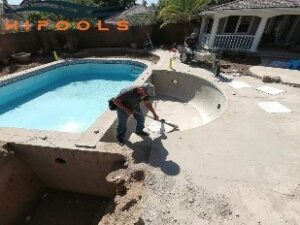
Safety Features and Compliance
Safety is a critical aspect of pool installation and must never be overlooked. To ensure a secure environment, several essential safety features and compliance measures should be implemented. First, fencing and barriers are mandatory in most regions. A fence at least 4 feet high with self-closing and self-latching gates is required to prevent unsupervised access, especially by children. Additionally, pool covers, whether automatic or manual, are highly recommended. These covers not only prevent accidental falls into the water but also help keep debris out of the pool.
Another vital safety feature is the installation of anti-entrapment devices. Compliant drain covers are necessary to prevent suction entrapment, which can pose serious risks to swimmers. Pool alarms are also an effective tool for enhancing safety. These alarms can alert you if someone enters the pool area unexpectedly, providing an extra layer of protection. Lastly, it is crucial to ensure that your pool complies with all local safety and building codes. Adhering to these regulations not only guarantees safety but also avoids potential legal issues. By prioritizing these measures, you can create a safer pool environment for everyone.
Landscaping Around the Pool
A well-designed landscape can transform your pool area into a stunning outdoor retreat. Consider these tips:
- Plant Selection: Choose chlorine-resistant, low-maintenance plants like palms, ornamental grasses, and succulents.
- Hardscaping: Incorporate patios, decks, or stone pathways to create a cohesive look.
- Lighting: Use LED lights to highlight landscaping features and ensure safety at night.
- Shade Structures: Add umbrellas, pergolas, or gazebos for comfort and protection from the sun.

Energy Efficiency Considerations
Creating an energy-efficient pool is a wise investment that yields both financial and environmental benefits. By prioritizing sustainability, pool owners can significantly reduce their carbon footprint while enjoying substantial cost savings. Implementing variable-speed pumps is a cornerstone of this approach, as these pumps dynamically adjust their operation to match the pool’s needs, drastically cutting energy consumption compared to their single-speed counterparts. Opting for solar heating further enhances efficiency by harnessing the sun’s abundant energy to warm the pool, eliminating the need for fossil fuels and associated emissions.
Beyond mechanical systems, thoughtful lighting choices play a crucial role. Replacing traditional bulbs with energy-efficient LED lights not only lowers energy consumption but also extends the lifespan of the lighting system, reducing maintenance and replacement costs. Moreover, a high-quality pool cover acts as a barrier against water evaporation and heat loss, minimizing the need for constant refilling and reheating. This simple addition significantly reduces energy use, especially during cooler nights or when the pool is not in use. By combining these strategies, pool owners can create a more sustainable and cost-effective swimming experience, ensuring their enjoyment doesn’t come at the expense of the environment.
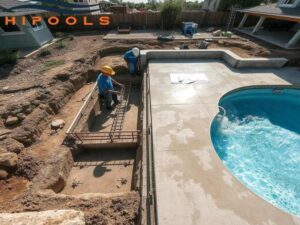
Upgrades and Accessories for Pools
Enhance your pool’s functionality and aesthetics with these popular upgrades:
Upgrading your pool with various accessories and systems can significantly enhance your swimming experience while making maintenance easier. Saltwater systems are a popular choice as they are gentler on the skin and eyes compared to traditional chlorine systems, and they require less maintenance. Adding water features like fountains, waterfalls, or bubblers can elevate the visual appeal of your pool, creating a more relaxing and luxurious atmosphere.
For those looking to save time and effort, automated cleaning systems, such as robotic or suction-side cleaners, can handle the tedious task of keeping your pool spotless. Heating systems, whether gas, electric, or solar-powered, allow you to extend your swimming season by maintaining comfortable water temperatures even during cooler months. Additionally, smart pool technology offers the convenience of controlling your pool’s temperature, lighting, and cleaning schedules directly from your smartphone, making pool management more efficient and user-friendly. These upgrades not only improve functionality but also add value and enjoyment to your pool experience.

Post-Installation Inspection and Warranty
Once your pool is installed, a thorough inspection is essential to ensure everything is in working order. Here’s what to check:
1. Inspection Checklist:
A comprehensive pool inspection checklist is crucial for ensuring both the safety and longevity of your swimming pool. This checklist begins with a thorough examination of the pool’s structure, focusing on identifying any cracks or leaks that could lead to water loss or structural damage. Next, all pool equipment, including pumps, filters, and heaters, should be meticulously tested to confirm they are operating correctly and efficiently.
Safety is paramount, so the inspection must include verifying that all safety features, such as fencing, alarms, and covers, are properly installed and functioning as intended. Finally, maintaining the correct water chemistry is essential for a healthy and enjoyable swimming experience. This involves balancing the water’s chemical composition and testing for proper pH levels to prevent issues like algae growth and skin irritation.
2. Warranty Coverage :
Understanding your pool’s warranty coverage is essential for protecting your investment. Typically, pool warranties provide protection against structural defects that may arise in the pool shell, as well as malfunctions in essential equipment such as pumps, filters, and heaters. However, the specifics of what is and isn’t covered can vary significantly, so it’s crucial to carefully review the terms and conditions of your warranty. Pay close attention to any exclusions or limitations, as well as the duration of coverage for different components. To ensure you can effectively utilize your warranty if needed, maintain meticulous records of all documentation, including the original purchase receipt, warranty paperwork, and any service records. This proactive approach will streamline the claims process and safeguard your pool for years to come.
What is the cheapest inground Swimming pool?
Pool Anatomy and Plumbing for beginners (step by step)
How to install an above ground pool
Before and after pool installation |how much is cost backyard makeover
Top 5 DIY fiberglass pool kit mistakes and consideration

Final Thoughts
Swimming pool installation is a complex but rewarding process that requires careful planning, attention to detail, and a focus on safety and efficiency. By addressing common challenges, incorporating energy-efficient features, and enhancing your pool with upgrades and accessories, you can create a backyard oasis that provides years of enjoyment.
At Hi Poolss, we’re committed to making your pool installation experience seamless and stress-free. From initial planning to post-installation care, our team of experts is here to guide you every step of the way. Contact us today to start your journey toward the perfect swimming pool!


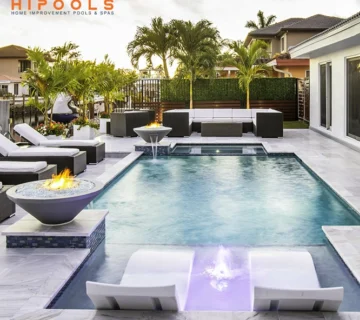
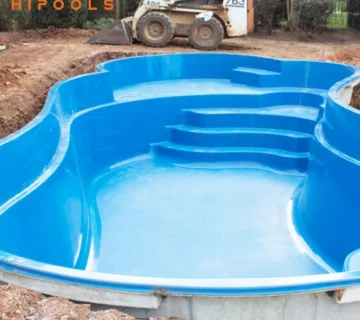
No comment